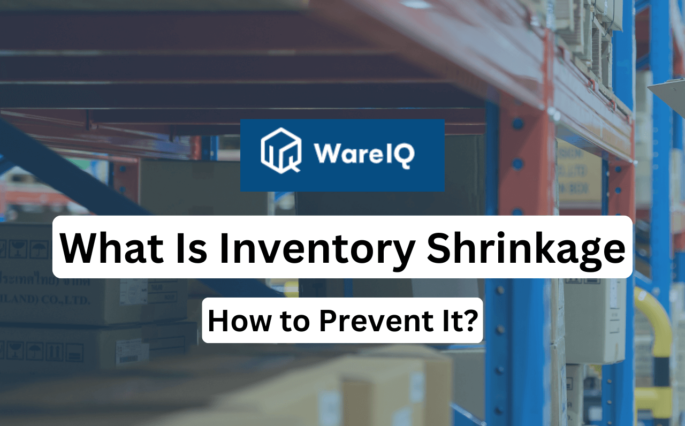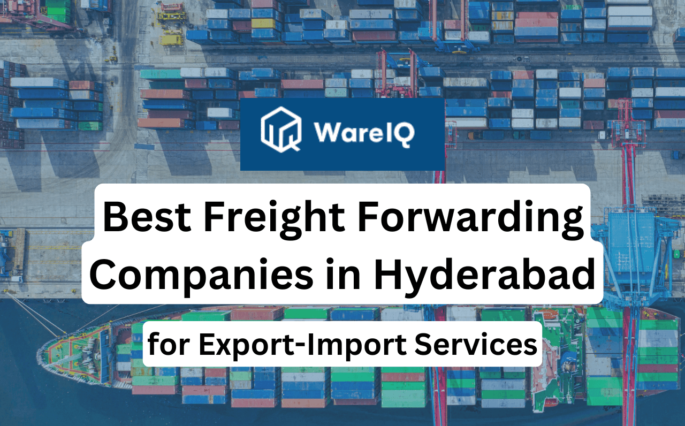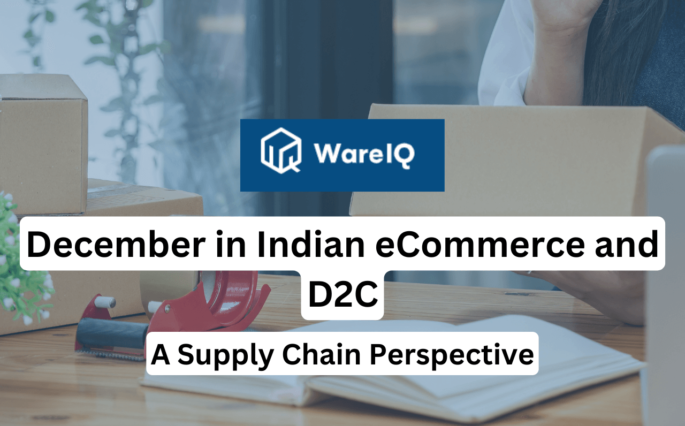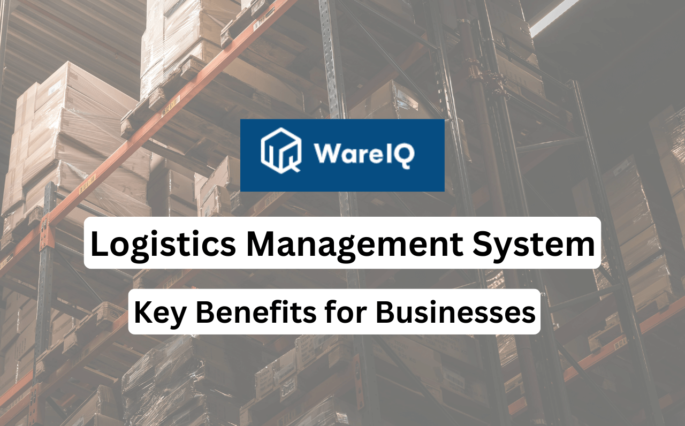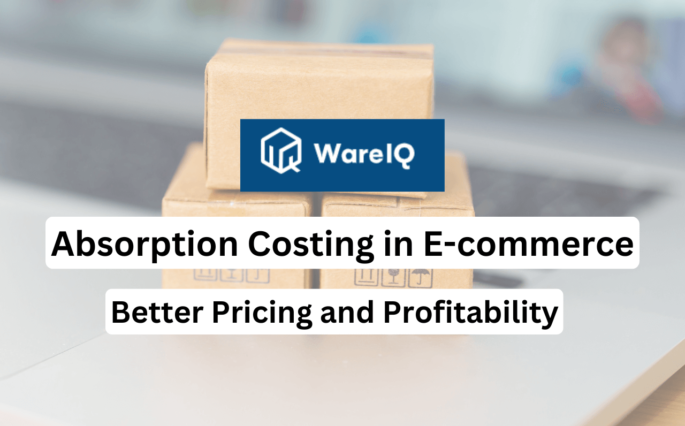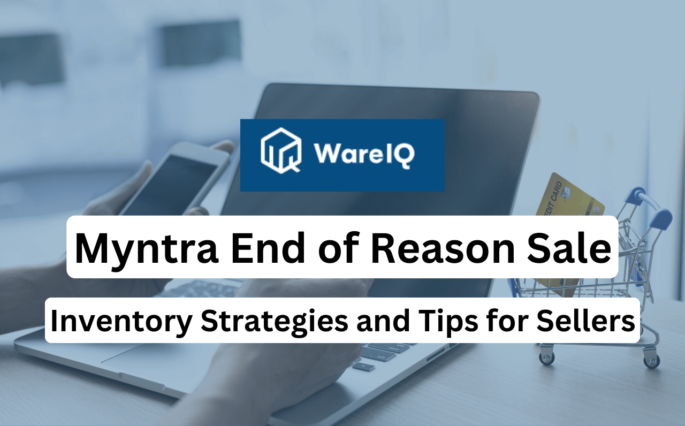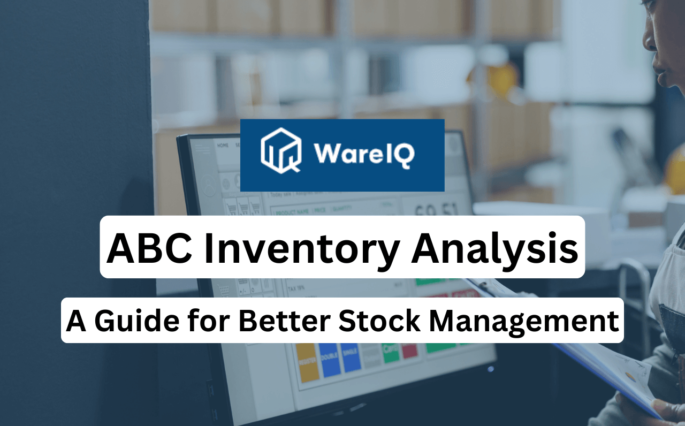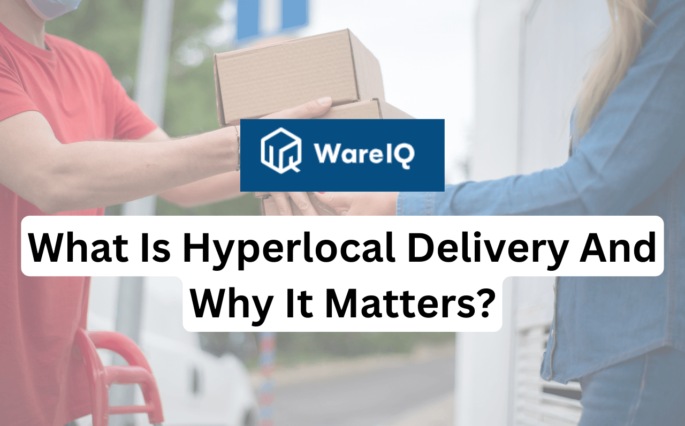Blogs
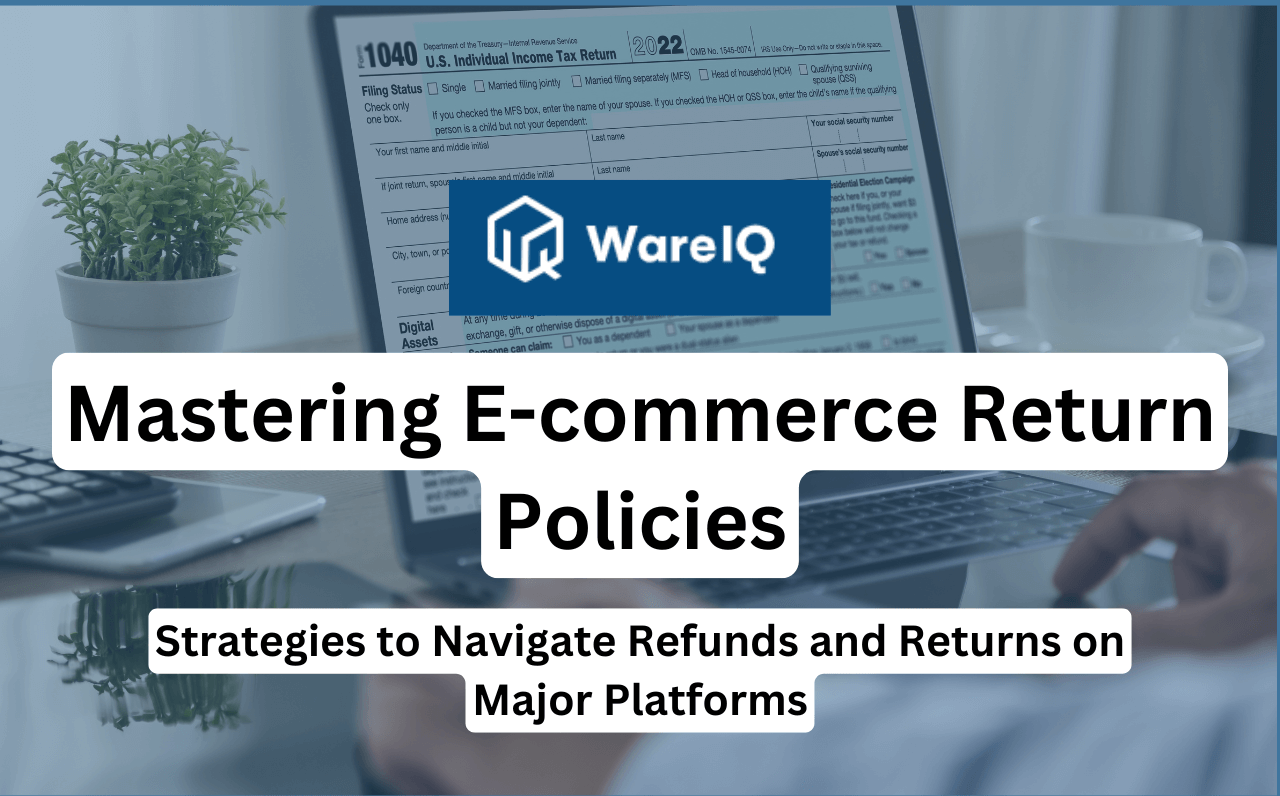
Mastering E-commerce Return Policies: Strategies for Sellers to Navigate Refunds and Returns Across Major Platforms
An e-commerce return policy stands as a contractual agreement between sellers and buyers, delineating the terms and conditions governing product returns and refunds. It embodies not only the seller's commitment to customer satisfaction but also serves as a mechanism for resolving disputes and mitigating losses. Against the backdrop of an increasingly discerning consumer base and intensifying market competition, the significance of a well-crafted e-commerce return policy cannot be overstated. From defining return windows to establishing clear guidelines for return shipping and restocking fees, each facet of the return policy plays a pivotal role in shaping the customer experience and shaping the trajectory of e-commerce ventures. In the continuously evolving domain of e-commerce, crafting an adept return policy has transcended mere necessity—it has become a linchpin for success. As sellers navigate the intricate landscape of online retail, the formulation of an effective e-commerce return policy emerges as a cornerstone for fostering consumer trust, enhancing brand reputation, and, ultimately, driving sustainable growth. In this comprehensive guide, we embark on a journey to demystify the complexities of mastering e-commerce return policies, equipping sellers with strategic insights to manage refunds and returns across major platforms with confidence and precision. Join us as we unravel the intricacies of e-commerce return policies, offering actionable strategies and invaluable insights to empower sellers in their quest to master the art of returns management. Demystifying E-commerce Return Policies An e-commerce return policy serves as the bedrock of trust in the online shopping sphere, outlining the rights and obligations of both sellers and buyers. Its significance transcends mere transactional details—it embodies a commitment to customer satisfaction and establishes a framework for seamless returns management. With an e-commerce return policy at its core, this pivotal document delineates crucial aspects such as return windows, condition of returned items, and restocking fees, shaping the dynamics of post-purchase interactions. For sellers, a well-defined return policy not only instils confidence in prospective buyers but also mitigates the risk of returns-related disputes and losses. By setting clear expectations and guidelines, sellers can streamline the returns process, foster positive customer experiences, and ultimately cultivate long-term brand loyalty. Amidst the dynamic landscape of e-commerce, understanding the nuances of e-commerce return policies is paramount for sellers seeking to navigate the complexities of refunds and returns with finesse and efficacy. Critical Components of an Effective Return Policy An effective e-commerce return policy comprises several key components, each meticulously crafted to foster transparency, mitigate risks, and uphold customer satisfaction. Let's delve into these components in detail: 1. Return Window The return window represents the timeframe within which customers can initiate return requests after receiving their purchases. Sellers must strike a balance between offering a reasonable return window and safeguarding against potential abuse of return privileges. By clearly defining this period, sellers provide customers with clarity regarding their options for returning products, thereby enhancing trust and reducing uncertainty. 2. Condition of Returned Items Defining the acceptable condition of returned items is crucial for ensuring fairness and transparency in the returns process. Sellers should articulate clear guidelines regarding the condition in which products must be returned, taking into account factors such as unworn apparel, unopened packaging, and intact accessories. This not only helps sellers assess the eligibility of returned items for resale but also minimises the risk of disputes arising from discrepancies in product condition. 3. Restocking Fees Restocking fees allow sellers to recover handling and processing costs associated with returned items. While imposing restocking fees can help offset these expenses, sellers must exercise caution to avoid alienating customers or discouraging future purchases. Communicating the imposition of restocking fees transparently and judiciously can help strike a balance between recovering costs and maintaining customer satisfaction. 4. Return Shipping Determining responsibility for return shipping costs is a crucial aspect of e-commerce return policies. Sellers may opt to bear the cost themselves, require customers to cover shipping expenses, or establish a shared responsibility model. Offering flexible return shipping options and clearly communicating these arrangements to customers can enhance convenience and minimise friction in the returns process. By meticulously addressing these key components, sellers can craft an effective return policy that not only protects their interests but also fosters positive customer experiences and strengthens brand loyalty. This comprehensive approach to returns management lays the foundation for sustainable growth and success in the competitive e-commerce landscape. Examining Return Policies on Major Platforms In the dynamic realm of e-commerce, significant platforms such as Amazon and Flipkart have established robust return policies aimed at fostering trust, facilitating seamless transactions, and protecting the interests of both sellers and buyers. Let's delve into the intricacies of these policies: 1. Flipkart's Seller Protection Fund (SPF) Policy Flipkart's Seller Protection Fund (SPF) Policy stands as a testament to the platform's commitment to safeguarding sellers against fraudulent returns and unjustified claims. Under this policy, Flipkart reimburses sellers for eligible returns that meet specified criteria, thereby providing sellers with a safety net against potential losses. By offering financial protection and recourse mechanisms, Flipkart empowers sellers to conduct business with confidence and peace of mind. 2. Amazon's Return Policy Amazon's customer-centric return policy prioritises buyer satisfaction while providing sellers with mechanisms to address return-related challenges effectively. Sellers on Amazon can leverage tools such as the A-to-Z Guarantee and Seller Protection Policy to mitigate risks associated with returns and refunds. By offering a seamless returns experience and robust seller support infrastructure, Amazon reinforces its commitment to fostering trust and transparency in the marketplace. 3. Amazon's Return Fraud Prevention In addition to facilitating returns, Amazon implements stringent measures to prevent return fraud and abuse. Through sophisticated algorithms and fraud detection mechanisms, Amazon identifies and mitigates instances of fraudulent returns, thereby protecting both sellers and buyers from fraudulent activity. By prioritising integrity and security in the returns process, Amazon upholds the integrity of its marketplace and instils confidence among stakeholders. Examining the return policies of major e-commerce platforms offers valuable insights into best practices and industry standards for returns management. By leveraging the features and protections provided by platforms such as Flipkart and Amazon, sellers can navigate the complexities of returns with greater confidence and efficiency, ultimately enhancing their competitiveness and success in the e-commerce landscape. Strategies for Optimising Return Policies Optimising e-commerce return policies is essential for e-commerce sellers to enhance customer satisfaction, streamline operations, and mitigate losses. Let's explore some effective strategies for optimising return policies: 1. Data-Driven Analysis Harnessing the power of data analytics enables sellers to gain valuable insights into return trends, patterns, and customer behaviours. By analysing return data, sellers can identify the root causes of returns, pinpoint areas for improvement, and make data-driven decisions to optimise their return policies. Leveraging analytics tools and techniques empowers sellers to refine their return processes, minimise return rates, and enhance overall operational efficiency. 2. Customer Feedback Integration Soliciting feedback from customers regarding their return experiences provides invaluable insights for optimising return policies. By actively seeking and incorporating customer feedback, sellers can gain a deeper understanding of customer preferences, pain points, and expectations. Integrating customer feedback into the iterative process of policy refinement enables sellers to tailor their return policies to meet the evolving needs and preferences of their target audience, thereby enhancing customer satisfaction and loyalty. 3. Continuous Improvement Adopting a mindset of continuous improvement is essential for optimising return policies in the long term. Sellers should view return policies as dynamic and iterative documents that require periodic evaluation and refinement. By staying abreast of industry trends, emerging technologies, and evolving customer expectations, sellers can proactively adapt their return policies to remain competitive and responsive to changing market dynamics. Embracing a culture of continuous improvement fosters innovation, resilience, and adaptability in the face of evolving e-commerce landscapes. By implementing these strategies, e-commerce sellers can optimise their return policies to enhance customer satisfaction, reduce operational costs, and drive sustainable growth. A proactive approach to return policy optimisation empowers sellers to stay ahead of the curve, differentiate themselves in the marketplace, and deliver exceptional value to customers. Importance of Communications in Returns Management Effective communication plays a pivotal role in navigating the complexities of returns management, fostering transparency, trust, and satisfaction among all stakeholders involved. Let's explore the importance of communication in returns management: 1. Proactive Notification Keeping customers informed at every stage of the returns process is essential for managing expectations and maintaining transparency. Proactive notification mechanisms, such as email updates and order status notifications, enable sellers to communicate important information regarding return initiation, processing, and resolution. By providing timely updates, sellers demonstrate their commitment to customer satisfaction and alleviate uncertainty, thereby enhancing trust and confidence in the returns process. 2. Resolution Facilitation Establishing clear channels of communication for customers to seek assistance or clarification regarding return-related queries is critical for facilitating prompt and satisfactory resolutions. Sellers should offer multiple avenues for customers to reach out, including phone support, live chat, and email correspondence. Empowering customer service representatives with the knowledge and resources to address customer inquiries effectively enables sellers to resolve issues efficiently and uphold service excellence standards. Effective communication fosters positive interactions, strengthens relationships, and promotes customer loyalty in the realm of e-commerce returns management. By prioritising precise, timely, and transparent communication, sellers can navigate returns with confidence, mitigate disputes, and cultivate long-term customer relationships based on trust and satisfaction. Implementing a Claims Management System Implementing a robust claims management system is instrumental in streamlining the returns process, enhancing operational efficiency, and minimising errors. Let's delve into the components and benefits of a claims management system: 1. Centralised Platform A centralised claims management platform serves as a hub for processing, tracking, and resolving return claims efficiently. By consolidating all return-related data and documentation in one centralised system, sellers can streamline communication, facilitate collaboration across departments, and ensure consistency in claims processing. This centralised approach enables sellers to access real-time insights and metrics, empowering data-driven decision-making and informed strategic planning. 2. Automation and Integration Leveraging automation tools within the claims management system enables sellers to automate repetitive tasks, expedite claims processing, and minimise manual errors. Automated workflows facilitate seamless communication between stakeholders, automate notifications and escalations, and ensure compliance with return policies and regulations. Integrating the claims management system with existing e-commerce platforms and backend systems enhances data synchronisation, eliminates silos, and promotes seamless information exchange, thereby optimising operational efficiency and improving overall returns management. Implementing a claims management system empowers sellers to streamline returns processing, enhance visibility and control, and deliver superior customer experiences. By embracing automation, centralisation, and integration, sellers can optimise their returns management processes, reduce costs, and position themselves for sustainable growth and success in the competitive e-commerce landscape. Leveraging Analytics for Returns Optimisation In the realm of e-commerce, leveraging analytics has become indispensable for optimising returns management processes, enhancing customer satisfaction, and driving business growth. Let's explore the role of analytics in returns optimisation: 1. Data Collection and Analysis E-commerce sellers can collect vast amounts of data related to returns, including reasons for returns, product categories most commonly returned, return rates over time, and customer demographics. By analysing this data, sellers can identify patterns, trends, and correlations that provide valuable insights into the root causes of returns and areas for improvement. 2. Identifying Return Trends Analytics enables sellers to identify recurring return trends and patterns, such as seasonal fluctuations, product defects, sizing issues, and customer preferences. Armed with this information, sellers can proactively address underlying issues, adjust inventory levels, refine product descriptions, and optimise pricing strategies to minimise returns and maximise profitability. 3. Predictive Modeling Predictive analytics techniques allow e-commerce sellers to forecast future returns based on historical data and external factors such as market trends, competitor behaviour, and economic indicators. By developing predictive models, sellers can anticipate demand fluctuations, adjust inventory levels accordingly, and implement targeted marketing campaigns to mitigate the impact of returns expected on business operations. 4. Personalization and Targeting Analytics enables sellers to personalise the returns experience for individual customers based on their past purchase behaviour, preferences, and interactions with the brand. By segmenting customers into distinct cohorts and tailoring return policies, communications, and incentives to each segment, sellers can enhance customer satisfaction, loyalty, and lifetime value. By harnessing the power of analytics, e-commerce sellers can gain actionable insights into return trends, customer behaviours, and operational inefficiencies. This enables them to optimise returns management processes, reduce return rates, and drive sustainable business growth. In an increasingly competitive e-commerce landscape, analytics serves as a strategic asset for sellers seeking to stay ahead of the curve and deliver exceptional value to their customers. How to Effectively Address Returns Fraud and Abuse? Returns fraud and abuse pose significant challenges for e-commerce sellers, undermining profitability, eroding trust, and disrupting operations. Let's explore strategies for addressing returns fraud and abuse: 1. Types of Returns Fraud Returns fraud encompasses various deceptive practices, including wardrobing (or "renting and returning" items after use), counterfeit returns, and identity theft-related returns. Understanding the different types of returns fraud enables sellers to identify suspicious patterns and take proactive measures to mitigate risks. 2. Fraud Detection Mechanisms E-commerce sellers can implement fraud detection mechanisms, such as anomaly detection algorithms, pattern recognition software, and machine learning models, to identify potentially fraudulent returns. By analysing transactional data, return histories, and customer behaviour patterns, sellers can flag suspicious activities and investigate further to prevent fraudulent returns from being processed. 3. Enhanced Verification Processes Implementing enhanced verification processes, such as requiring proof of purchase, verifying customer identities, and conducting manual reviews of high-risk transactions, can help deter returns fraud and abuse. Sellers may also leverage technologies such as biometric authentication and geolocation tracking to enhance the security and integrity of the returns process. 4. Collaboration and Information Sharing Collaborating with industry partners, law enforcement agencies, and fraud prevention organisations facilitates information sharing and enables sellers to stay informed about emerging fraud trends and tactics. By participating in collaborative efforts and sharing insights and best practices, sellers can collectively combat returns fraud and protect the integrity of the e-commerce ecosystem. Addressing returns fraud and abuse requires a multifaceted approach encompassing proactive fraud detection, enhanced verification processes, and collaboration with stakeholders across the e-commerce ecosystem. By implementing robust fraud prevention measures and fostering a culture of vigilance and integrity, e-commerce sellers can safeguard their businesses against returns fraud and uphold the trust and confidence of their customers. International Considerations in Returns Management Managing returns in the context of international e-commerce presents unique challenges and considerations for sellers. Let's explore critical factors to consider when navigating cross-border returns: 1. Customs Regulations and Duties International returns may be subject to customs regulations and duties imposed by importing countries. Sellers must familiarise themselves with applicable laws, documentation requirements, and duty/tax implications to ensure compliance and facilitate smooth returns processing. 2. Shipping Logistics and Costs Cross-border returns involve complex shipping logistics and costs, including return shipping fees, customs clearance expenses, and transportation charges. Sellers should evaluate shipping options, carriers, and fulfilment partners to optimise logistics efficiency and minimise costs associated with international returns. 3. Currency Conversion and Refunds Currency conversion issues may arise when processing international returns and issuing refunds in different currencies. Sellers must consider exchange rates, transaction fees, and currency conversion methods to ensure accurate and timely refunds for global customers. 4. Multilingual Customer Support Providing multilingual customer support is essential for effectively addressing the needs and inquiries of international customers regarding returns. Sellers should offer support channels in multiple languages, including phone support, live chat, and email correspondence, to facilitate clear communication and resolution of return-related queries. Navigating cross-border returns requires careful planning, attention to detail, and an understanding of the unique challenges inherent in international e-commerce. By proactively addressing customs regulations, shipping logistics, currency conversion issues, and language barriers, sellers can optimise their international returns management processes and deliver exceptional service to customers worldwide. Sustainability Initiatives in Returns Processing As e-commerce continues to flourish, sustainability has emerged as a paramount concern in returns processing. Let's explore the initiatives and strategies aimed at promoting sustainability in returns management: 1. Minimising Waste through Efficient Packaging Sustainable returns processing begins with minimising waste, particularly in packaging materials. E-commerce sellers can adopt eco-friendly packaging solutions, such as recyclable materials and minimalist packaging designs, to reduce the environmental footprint of returned items and minimise landfill waste. 2. Optimising Reverse Logistics Operations Efficient reverse logistics operations are essential for minimising transportation emissions and reducing the carbon footprint of returns processing. Sellers can optimise routing, consolidation, and transportation modes to streamline reverse logistics processes, reduce fuel consumption, and lower greenhouse gas emissions associated with return shipments. 3. Repurposing Returned Items Repurposing returned items offers an innovative approach to minimising waste and maximising resource utilisation in return processing. Sellers can refurbish, repair, or repurpose returned items for resale, donation, or recycling, thereby extending the product's lifecycle and reducing the environmental impact of returns. 4. Circular Economy Initiatives Embracing circular economy principles entails designing returns processes that promote resource efficiency, product longevity, and material circularity. Sellers can implement take-back programs, incentivise product refurbishment, and facilitate material recovery and recycling to create a closed-loop system where returned products are sustainably reintegrated into the supply chain. By embracing sustainability initiatives in returns processing, e-commerce sellers can align their operations with environmental stewardship goals, reduce waste, and mitigate the ecological impact of returns on the planet. Sustainable returns management not only benefits the environment but also enhances brand reputation fosters customer loyalty, and drives positive social impact in the e-commerce ecosystem. Conclusion In the burgeoning domain of e-commerce, mastering return policies is essential for sellers seeking to thrive amidst competition and consumer expectations. By incorporating key components such as e-commerce return policy, addressing fraud and abuse, and embracing sustainability initiatives, sellers can navigate refunds and returns with confidence and efficacy. Leveraging analytics for returns optimisation, international considerations, and proactive communication further strengthens sellers' ability to deliver exceptional customer experiences across major platforms like Flipkart and Amazon. As e-commerce continues to shape the future of retail, the importance of robust return policies and efficient returns management cannot be overstated. By prioritising transparency, trust, and sustainability, sellers can forge lasting relationships with customers, drive business growth, and establish themselves as leaders in the dynamic world of online retail. Suggested read: New Rules for E-Commerce in India FAQs About E-commerce Return Policy What is an e-commerce return policy, and why is it important?An e-commerce return policy is a set of guidelines outlining the terms and conditions for returning products purchased online. It is crucial for establishing trust with customers, resolving disputes, and fostering positive shopping experiences. Sellers who offer transparent and fair return policies are more likely to attract and retain customers.How can sellers optimise their e-commerce return policies to reduce return rates?Sellers can optimise their e-commerce return policies by implementing strategies such as defining clear return windows, setting criteria for the condition of returned items, and offering flexible return shipping options. Additionally, leveraging data analytics to identify return trends and patterns can help sellers refine their policies and minimise return rates over time.What are some common types of returns fraud in e-commerce?Common types of returns fraud in e-commerce include wardrobing (returning items after use), counterfeit returns, and identity theft-related returns. Sellers must implement fraud detection mechanisms and enhanced verification processes to mitigate the risk of returns fraud and protect their businesses.How do major e-commerce platforms like Amazon and Flipkart handle returns?Major e-commerce platforms like Amazon and Flipkart have robust return policies to prioritise customer satisfaction and provide sellers with recourse mechanisms. For example, Flipkart offers sellers protection through its Seller Protection Fund (SPF) Policy. At the same time, Amazon provides tools such as the A-to-Z Guarantee and Seller Protection Policy to address return-related challenges.
December 06, 2024

